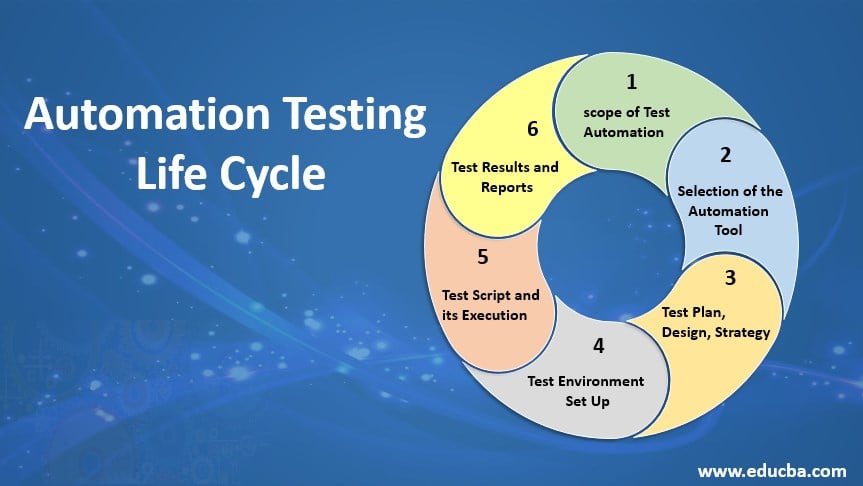Mastering Automation Testing: Tools, Techniques, and Benefits
Wiki Article
From Handbook to Automated Testing: A Comprehensive Guide to Transitioning Smoothly and Effectively
In the realm of software testing, the change from guidebook to automated procedures has ended up being a progressively important shift for organizations seeking to boost performance and precision in their testing practices. As technology continues to advance, the need for reliable and smooth automatic testing techniques has never ever been much more pressing. The journey from manual to automated screening is not without its obstacles, but when come close to strategically and with a clear strategy in mind, the benefits can be considerable - automation testing. In this detailed guide, we will certainly check out essential actions and factors to consider necessary for a successful change, from the preliminary selection of devices to the integration of automation right into existing process. Keep tuned to discover the insights that will certainly help pave the method for a smoother and much more reliable testing procedure.Advantages of Automated Evaluating
Automated testing offers many advantages, boosting performance and precision in software program development procedures. One key benefit is the considerable decrease in screening time. Automated tests can be run simultaneously on several tools and running systems, substantially speeding up the testing stage contrasted to hand-operated screening. This increased efficiency enables faster responses on the top quality of the software, enabling designers to determine and resolve concerns quickly.Furthermore, automated screening makes sure a higher level of accuracy in finding defects. Because automated tests follow predefined manuscripts, human mistake is lessened, causing more reputable examination outcomes. Uniformity in testing is also improved, as automated examinations carry out the exact same steps precisely each time they are run. This uniformity is crucial in ensuring that all capabilities of the software program are completely checked, decreasing the likelihood of undetected insects slipping through to manufacturing.
Choosing the Right Devices

To start with, assess your purposes and demands. Comprehend the scope of your job, the technologies involved, and the capability of your group. This analysis will aid you establish the attributes and capacities you require in your testing devices.
Second of all, take into consideration the compatibility of the devices with your existing systems and processes. Smooth combination with your current software growth lifecycle is important to make sure a smooth transition to automation.
In addition, evaluate the scalability and flexibility of the devices. As your screening requires progress, the tools need to be able to adjust and fit changes properly.
Last but not least, consider the assistance and neighborhood around the devices. Robust assistance and an active customer community can give important sources and support when carrying out automated testing. By meticulously considering these aspects, you can choose the right tools that straighten with your demands and established the phase for a successful shift to automated screening.
Creating Efficient Examination Manuscripts

When crafting examination scripts, it is important to think about the particular needs of the software program being tested and make sure that the scripts deal with all critical performances. Descriptive and clear calling conventions for examination scripts and test instances can boost readability and maintainability. Furthermore, including error handling systems within the examination manuscripts can help in recognizing and dealing with problems without delay.
Additionally, organizing examination manuscripts right into modular components can enhance reusability and scalability, reducing redundancy and enhancing effectiveness in examination manuscript maintenance. Routine testimonials and updates to examine scripts are important to equal evolving software requirements and functionalities. By adhering to these concepts, testers can develop effective and robust test scripts that contribute dramatically to the success of automated testing processes.
Integrating Automation Into Workflows
Efficient integration of automation tools into existing workflows improves and enhances procedures efficiency within software program growth cycles. When integrating automation right into process, it is critical to recognize recurring jobs that can be automated to save time and decrease human error. By seamlessly incorporating automated screening devices like Selenium or Appium into the software growth lifecycle, groups can accomplish faster comments on code changes, leading to quicker bug discovery and resolution. This assimilation enables constant testing throughout the growth procedure, making sure that any type of issues are recognized early on, causing greater software top quality. In addition, automation can be made use of to activate tests instantly after each code dedicate, offering immediate recognition and liberating testers to focus on even more complicated situations. Correct combination of automation tools calls for collaboration in between advancement, screening, and procedures teams to establish a unified process that enhances efficiency and performance in providing top quality software.Ensuring a Smooth Transition
Effectively transitioning to automated screening entails meticulous planning and cautious execution to optimize and decrease disruptions performance in the software program growth process - automation testing. To ensure a smooth transition, it is important to begin by performing a comprehensive evaluation of the present screening procedures and recognizing locations where automation can bring one of the most substantial advantages. Engaging with all stakeholders early at the same time, consisting of developers, company website testers, and job supervisors, is essential for garnering support and buy-in for the automation initiativeInteraction is essential during this transition phase. Clear interaction of the objectives, advantages, and expectations of automated testing aids to take care of any kind of resistance or worries that may occur. Additionally, providing ample training and resources for staff member to upskill in automation devices and methods is important for guaranteeing a successful change.

Conclusion
Finally, transitioning from manual to automated testing provides various benefits, including enhanced effectiveness and dependability. By choosing the proper devices, composing efficient test scripts, and integrating automation perfectly into workflows, organizations can ensure a smooth and successful shift. It is crucial to welcome automation as a useful possession in software application screening processes to enhance general quality and productivity.In the world of software program screening, the shift from manual to automated procedures has actually become an increasingly essential change for organizations seeking to improve effectiveness and accuracy in their screening methods. Automated tests can be run simultaneously on numerous gadgets and operating systems, considerably speeding up view publisher site the testing stage compared to hand-operated screening. Consistency in screening is also boosted, as automated examinations carry out the same actions precisely each time they are run.To make certain the effective implementation of picked testing devices, the development of effective examination scripts plays an essential function in validating the performance and performance of automated processes - automation testing. By following these concepts, testers can create reliable and robust examination scripts that contribute significantly to the additional resources success of automated screening processes
Report this wiki page